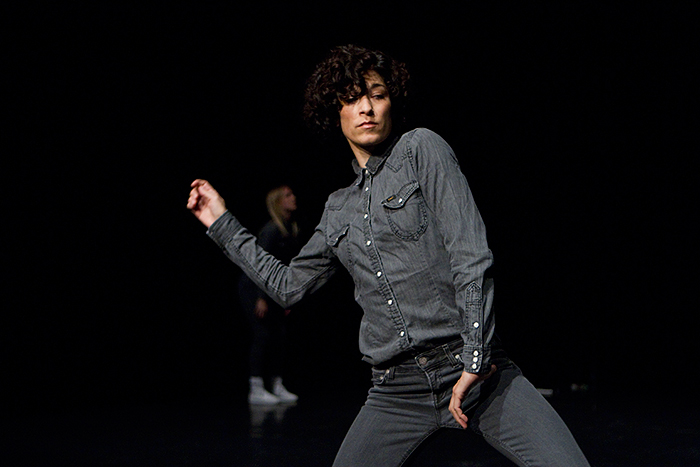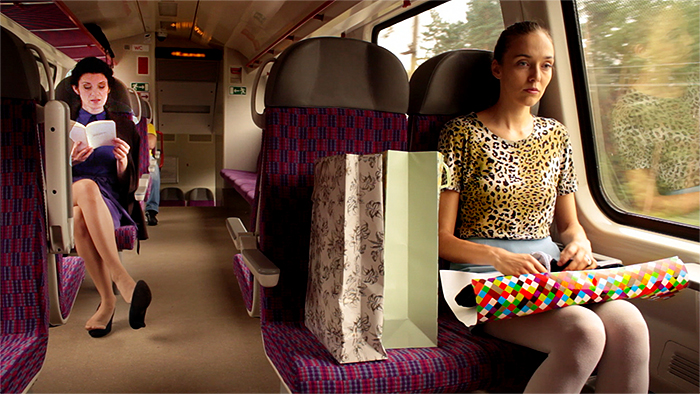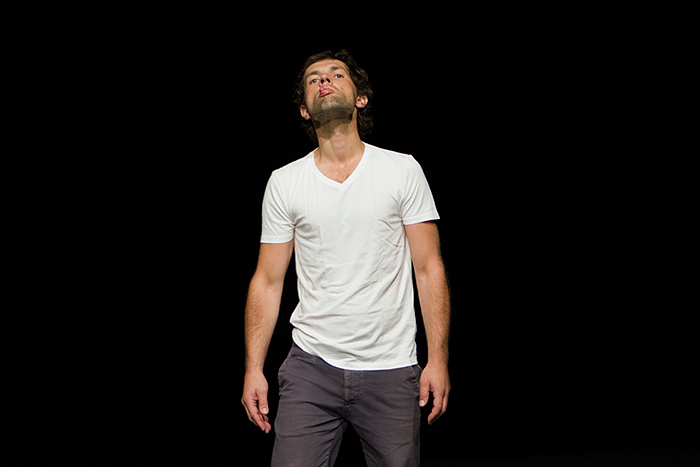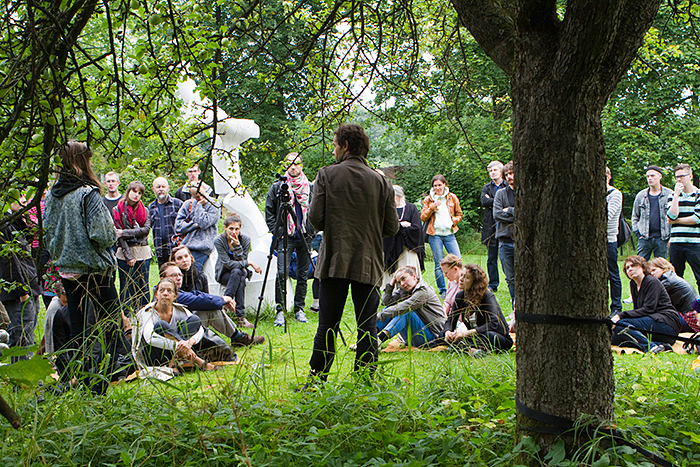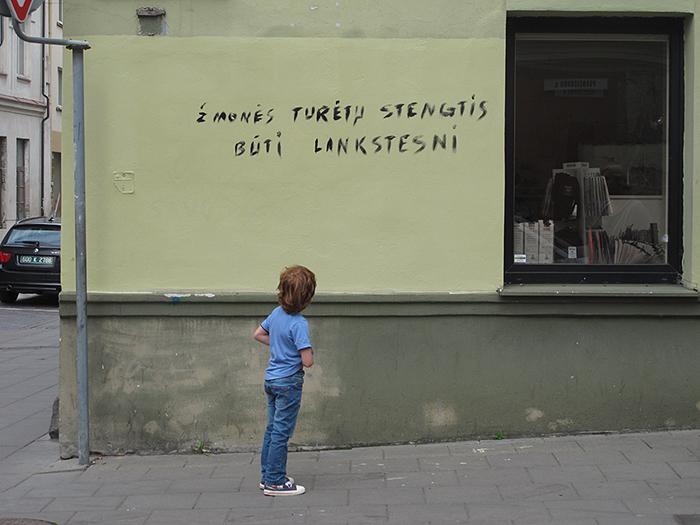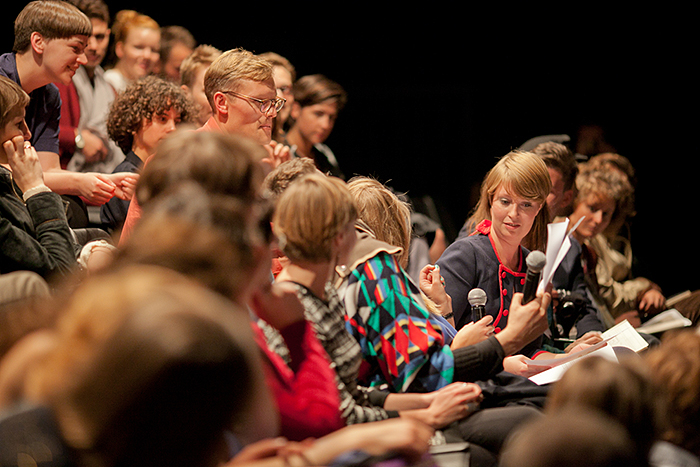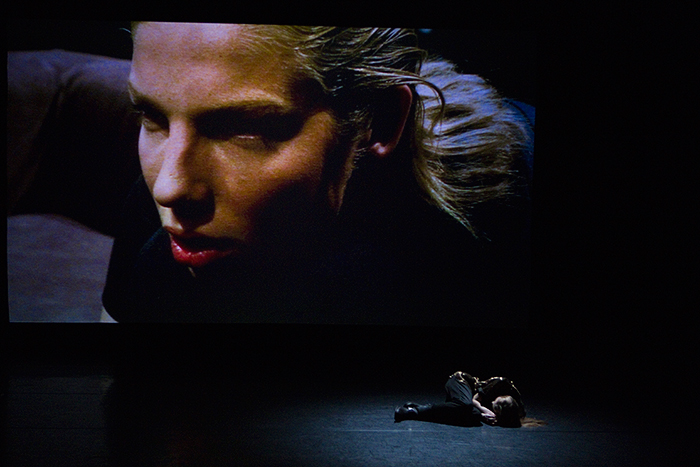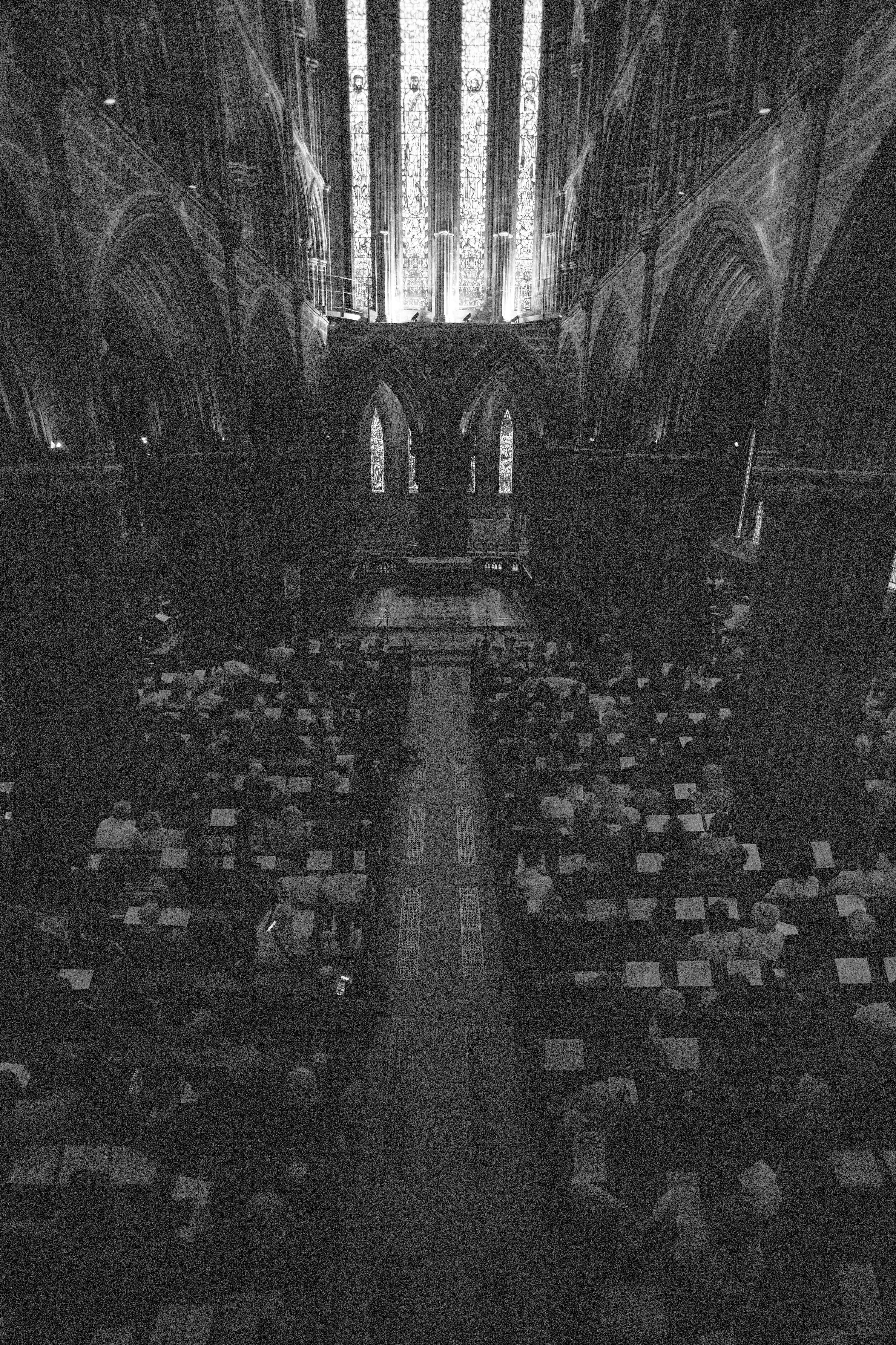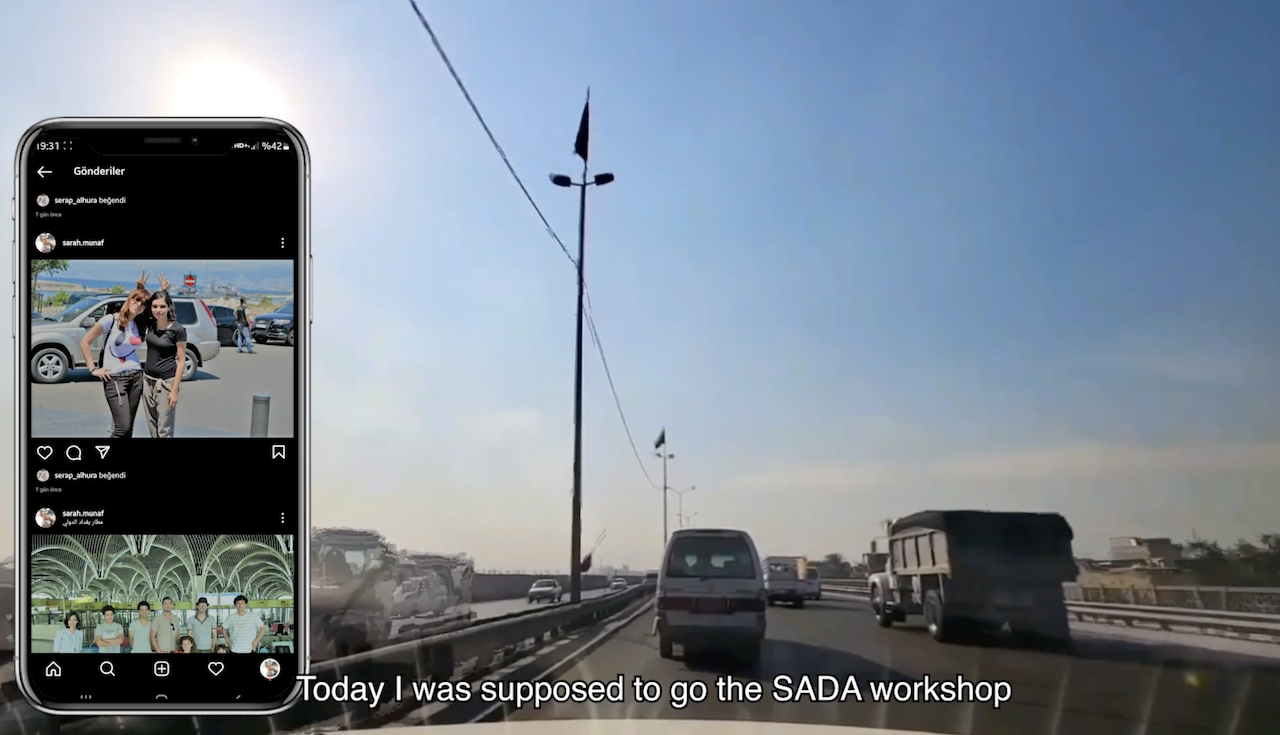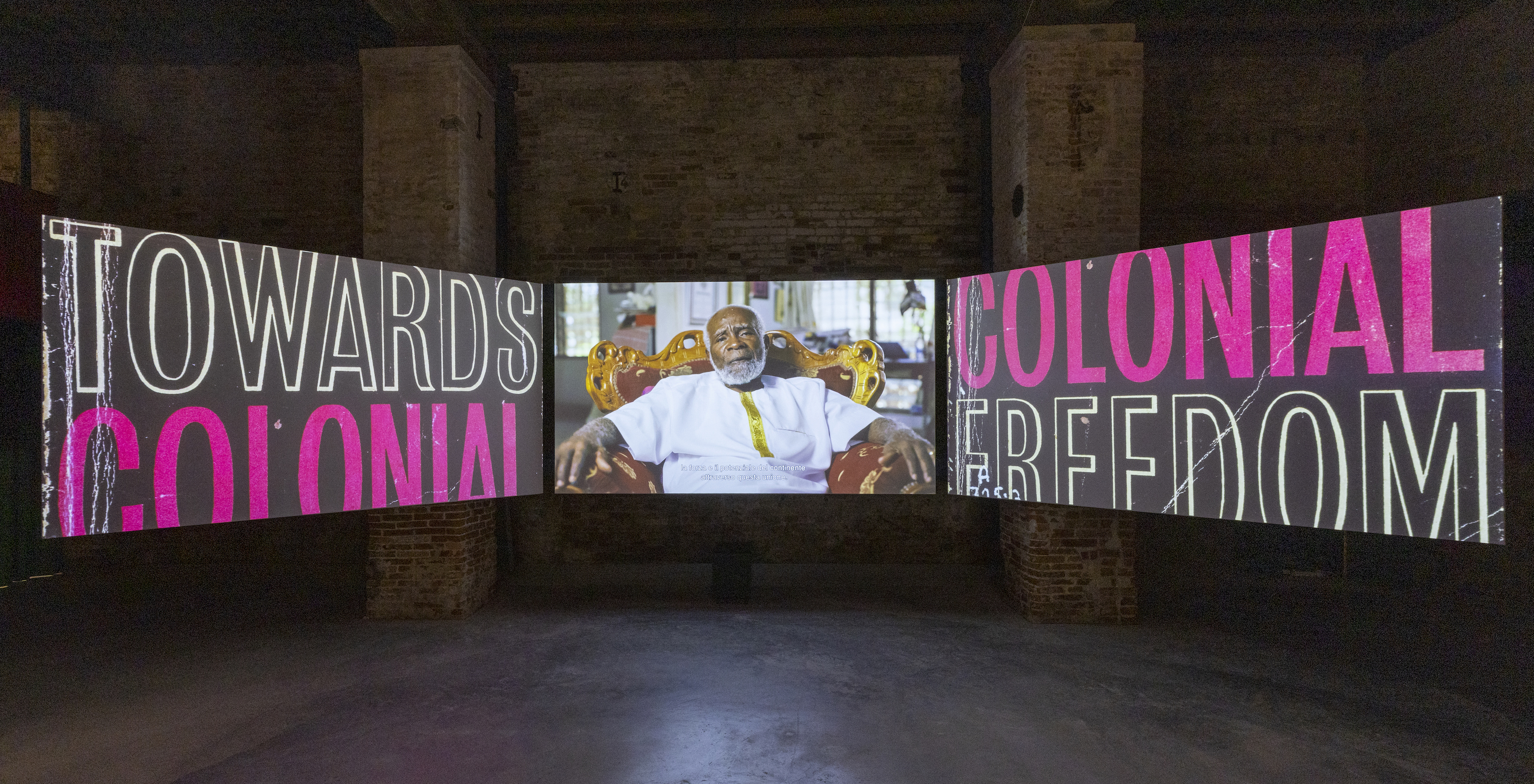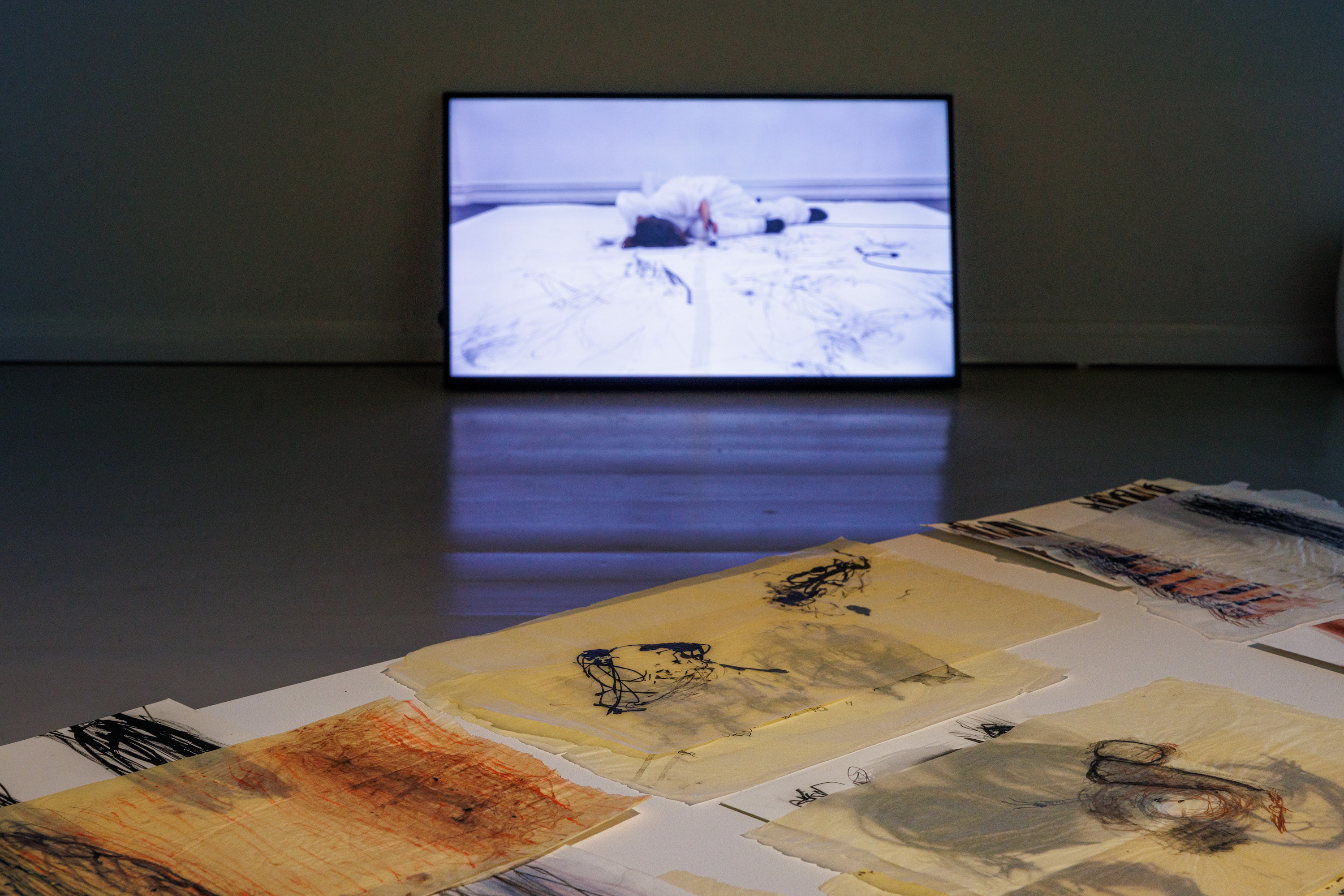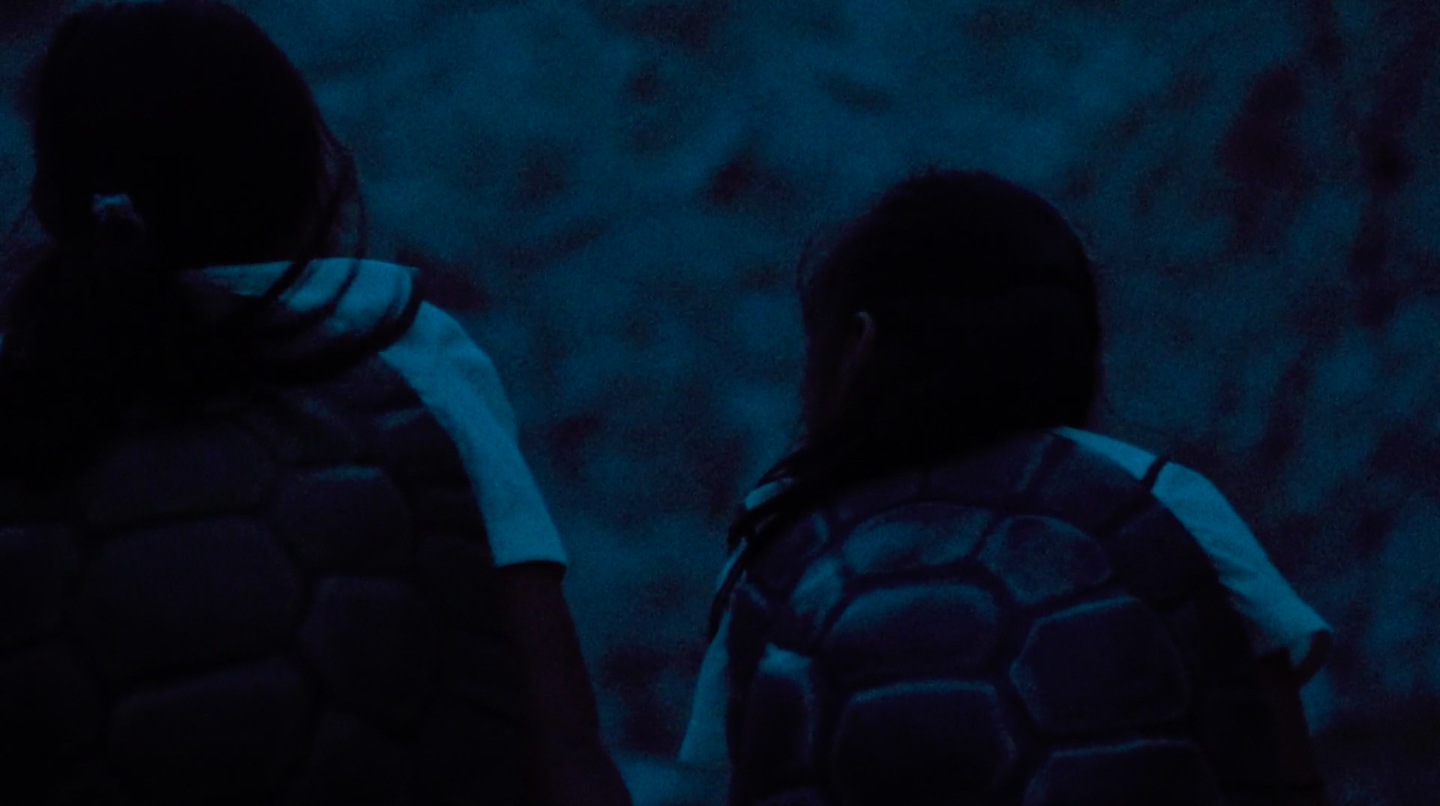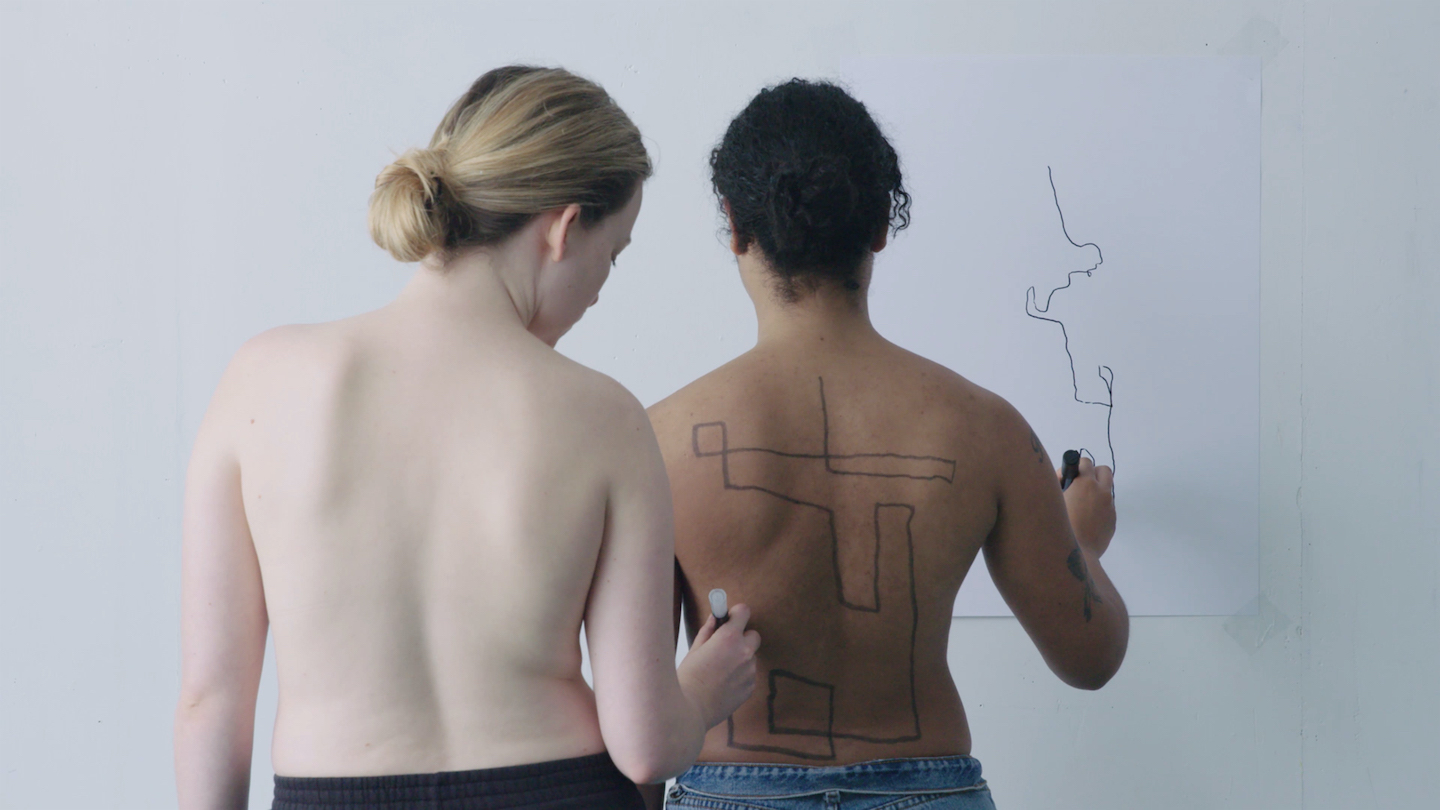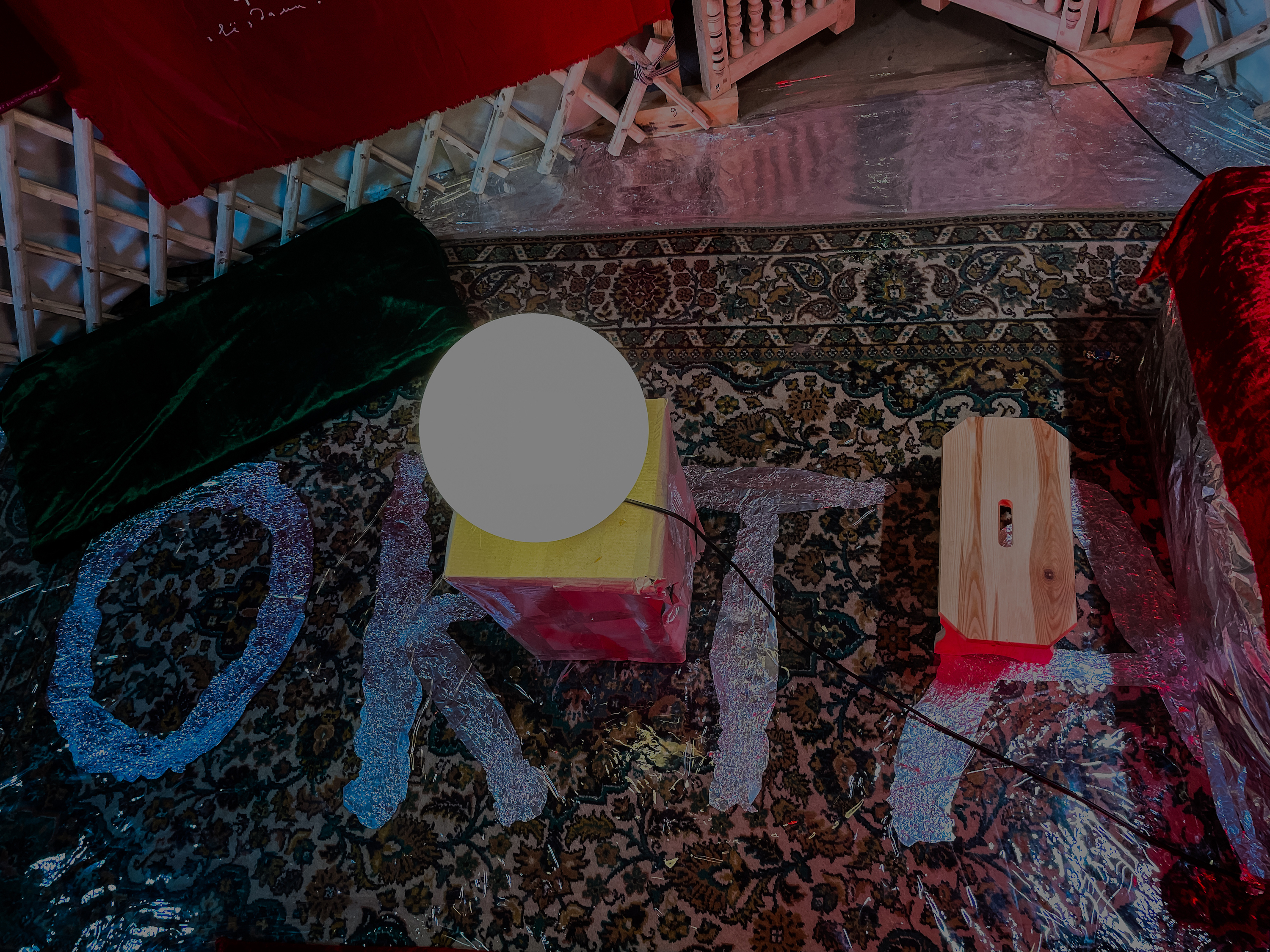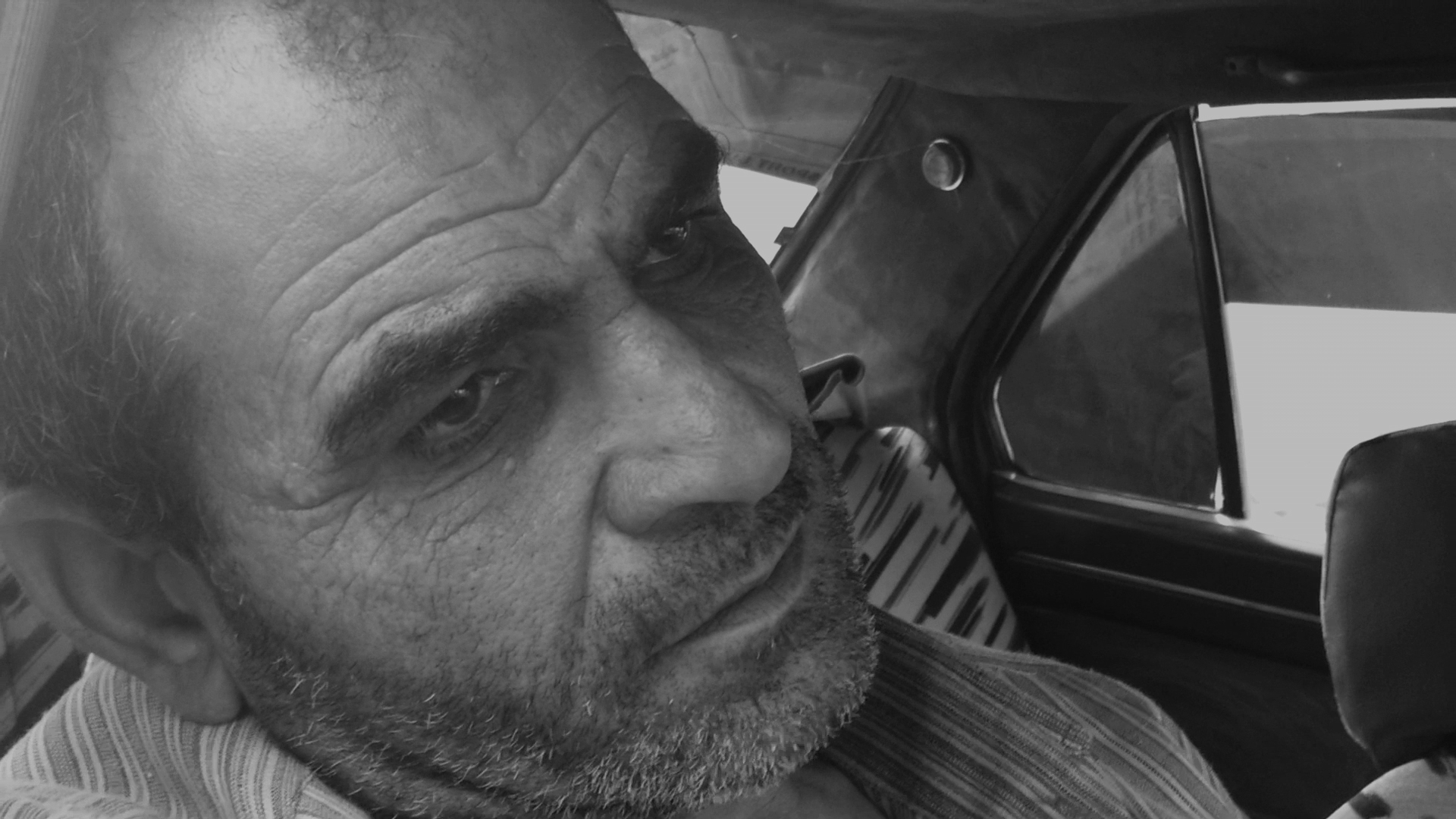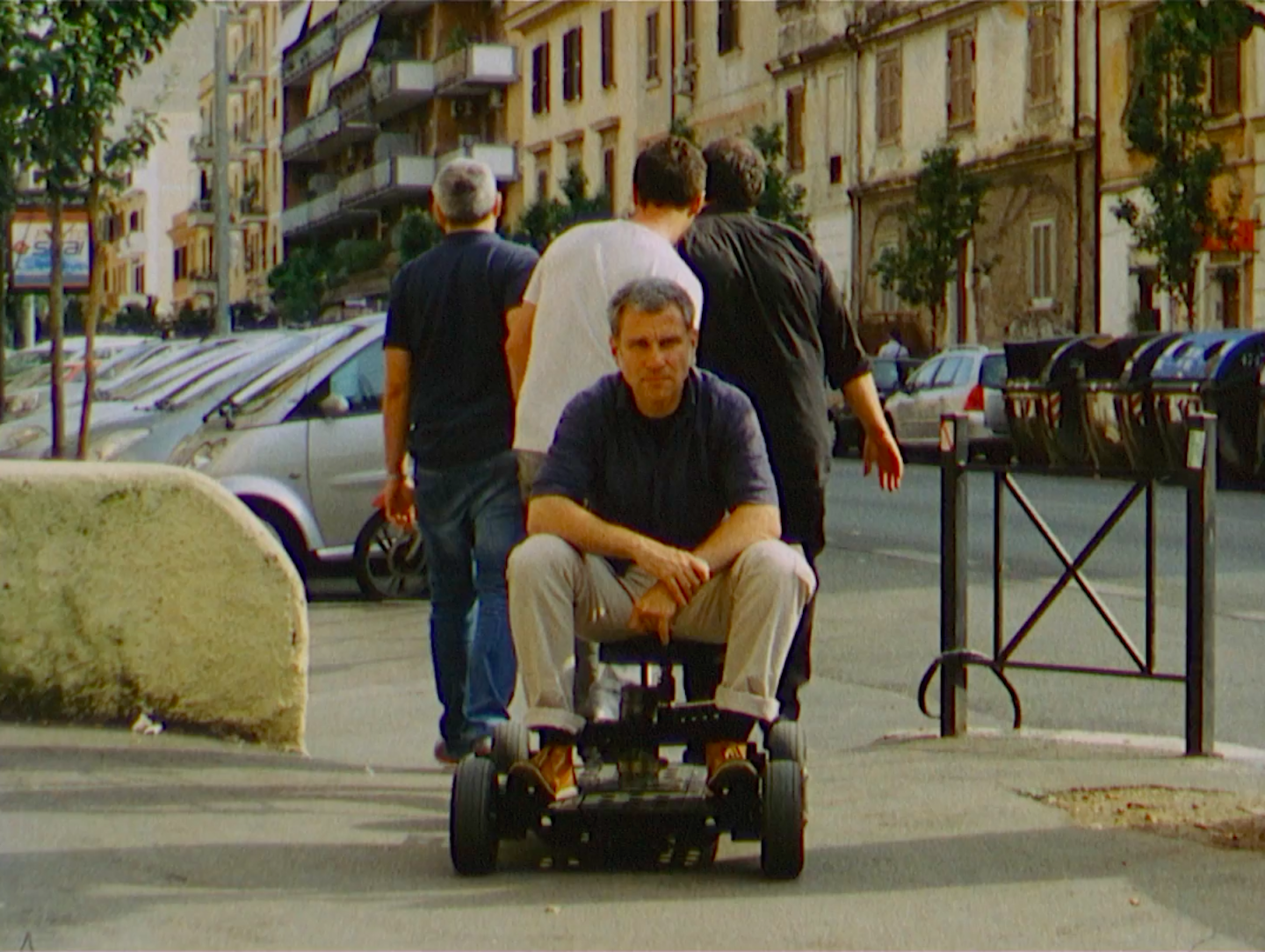Baltic Triennial, Vilnius
August 24–September 9, 2012
In a striking departure from the previous versions of the Baltic Triennial, curators Defne Ayas and Benjamin Cook, joined in their efforts by artists Ieva Misevičiūtė and Michael Portnoy, compressed this episodic large-scale exhibition into twelve days spanning the symbolic end of summer and onset of fall. Concentrating solely on film and performance, the entire program was “channeled” through a single human being, its namesake, Mindaugas. For the duration of the triennial, Lithuanian actor Darius Gumauskas was invited to “become” Mindaugas: he thus adopted the moniker, lent his image to the widespread exhibition publicity, and his versatile body, mind, and voice to the occasion. This Mindaugas, the name of the only King of Lithuania (ca. 1203–1263) and presently the most common male name in the country, served as the vehicle for two key themes underlying the show. The first is that a multitude of thoughts and ideas can be inhabited by and expressed through the vehicle of an individual subject. (The etymology of Mindaugas, according to the exhibition brochure, means the one with much wisdom, or many ideas, or much fame.) The second is that this individual subject could be somewhat representative of a specific geo-political and historical context known as “the Baltic.”
The schedule was divided into day and evening sessions, which had no overarching themes, yet loosely evoked states of human consciousness and the realm of the unconscious, respectively. In the daytime program, Mindaugas behaved as a sentient transmitting agent for artists and writers, including Eglė Budvytytė, Adam Kleinman, and Hu Xianqian, who provided scripts, scenarios, and situations for him to enact, either at the CAC (Center for Contemporary Art) or in various sites around the city. At the end of the day, Mindaugas could rest and allow others to take over. The evening program took place in the CAC’s purpose-built “Charismateria,” a black box theater and site for the metaphorical staging of Mindaugas’s “dreams,” supposedly represented in previously performed or adapted live works by Ursula Mayer (Gonda, 2011) and Alexandra Bachzetsis (Solo, A Piece Danced Alone, 2011) or those expressly choreographed or created for the occasion by Steve Cosson (not titled), Ivo Dimchev (Som Faves), Marianne Vitale (Tottering Windbags), and more. Running parallel to the performance program and working within the frame of questioning, positioning, and exposing subjectivity, Benjamin Cook devised an 8-hour film cycle for the “Cinema of the Self,” in a temporary space adjacent to the Charismateria, that included Ed Atkins’s The Trick Brain (2012), Moyra Davey’s Les Goddesses (2011), Sullivan & Sharmini’s The Last Days of British Honduras (2011), and others by Eric Baudelaire, Luke Fowler, Rania Stephan, and Neïl Beloufa. Sadly, that film program receives short shrift in this review due to my short stay in Vilnius and technical difficulties during the opening weekend that prevented me from viewing the films on site. I was, however, able to catch up on the episodes of Mark Aerial Waller’s quirky feuilleton, Time Together. A Film in Twelve Episodes, produced and edited daily and featuring a cast of locals, including Mindaugas, and moments from the events of the triennial, woven into a foreboding, soap-opera-ish plot.
I was only present for the first two days of this ambitious program, which kicked off in the Charismateria with Michael Portnoy’s 100 Big Entrances (a shorter version of his 3-hour 180 Big Entrances, 2010). Portnoy and his silken-voiced Lithuanian translator sat in the shadows downstage left and read instructions into a microphone, which Mindaugas, entering and exiting the stage, dressed casually in jeans and a t-shirt, interpreted to the musical accompaniment of a Timpani player. The instructions ranged from the standard theatrical wishes, “Make a big entrance” or “Make a bigger entrance” to the poetic, “Enter the past to uncover the volatile intimacy of moments,” to the philosophical “Enter the rumbling chiasmus where the Ideal and the Real Intersect,” to the political, “Enter like the Lithuanians entered Prussia, the Tartars and Kiev, and like Imperial Russia, Imperial Germany, the Red Army and the Nazis entered Lithuania and like Lithuania entered the European Union.” Here Mindaugas’s gestures and reactions veered toward the slapstick. This was Mindaugas first “real” appearance in the Triennial and it’s fair to say his nonchalant charm and ironic humor won over the packed house.
Later, in preparation for her work Incubatio, Asli Çavuşoğlu tucked Mindaugas into a hammock bed made out of entwined branches in one of the wooden outbuildings on the grounds of the Jeruzalé sculpture garden, a partly residential, partly wooded site, near sculptor Vladas Vildžiūnas’s studio, famous for harboring the work of dissident artists. Inspired by tales of dream interpretation and the extinct Khazar tribe in Milorad Pavić’s Dictionary of Khazars, Çavuşoğlu convoked us at 7:30 am to listen to Mindaugas recount his dreams and some interpretations offered by an anthropologist. With Mindaugas and the anthropologist speaking in Lithuanian to a crowd that traversed at least six generations, and their phrases translated for the non-native speakers by Misevičiūtė and CAC curator Julija Fomina, I got to thinking about the dominance of words and language—spoken, read, inscribed—in the performances I had seen, even though some were based in dance, or incorporated moving images and music. Tim Etchell’s Ways Forward turns out to be another case in point: in this daily activation, Mindaugas made several circuits around the city, painting imperative phrases (“People should take more chances” or “People should smile more in public spaces”) on walls, then covering them over again in the next round. The speaking subject, the articulate subject is positioned here toward an addressed subject, and passersby frequently stopped and inquired as to Mindaugas’s motives and actions—and even occasionally scolded him.
Due to this, and because Mindaugas was frequently referred to as an “empty vessel,” I kept wanting to picture him as a rhetorical trope ready for use. This sat uneasily with me, given Mindaugas’s clearly manifested agency when, for example, he would go off script, or when one of the curators, artists or members of the CAC team would slip and refer to him as Darius. It occurred to me instead that our Mindaugas was operating as the living hinge in everyday processes of translation; this seems to be at the core of the type of communicative performances I experienced. Words were translated into gestures or dance, or images were translated into words, or words were translated into other words. For the translator and translation theorist Antoine Berman, translation is not a quest to arrive at some truth in language, but is rather a very specific, eminently social site of human agency and intersubjectivity, one that takes into account the texture of experiences in language through which subjects are constituted. Not an “empty vessel”—no, not by any means, but, to echo surrealist André Breton’s exploration of the relationship between dreams and reality in Les vases communicants (1932), Mindaugas transformed into a “communicating vessel,” and an exemplary one at that.
